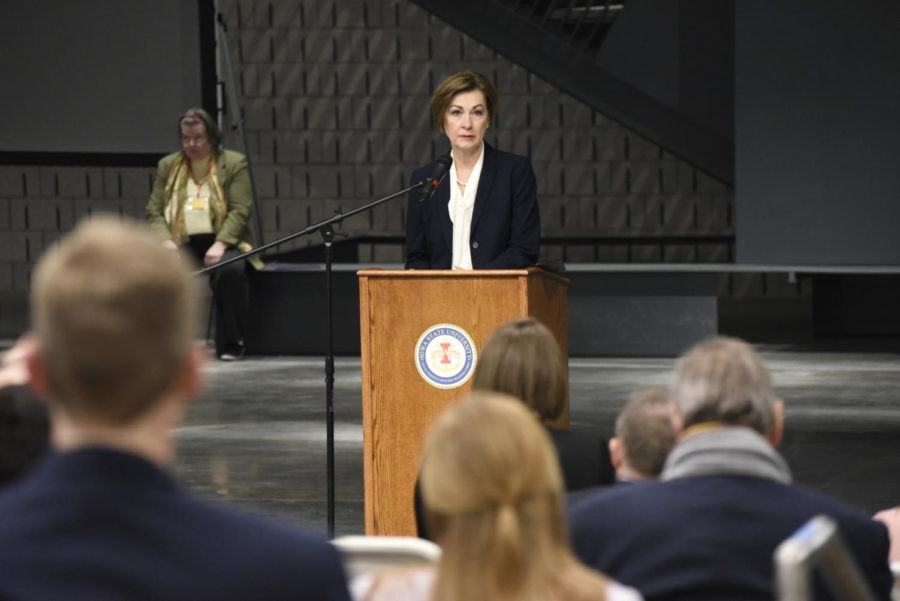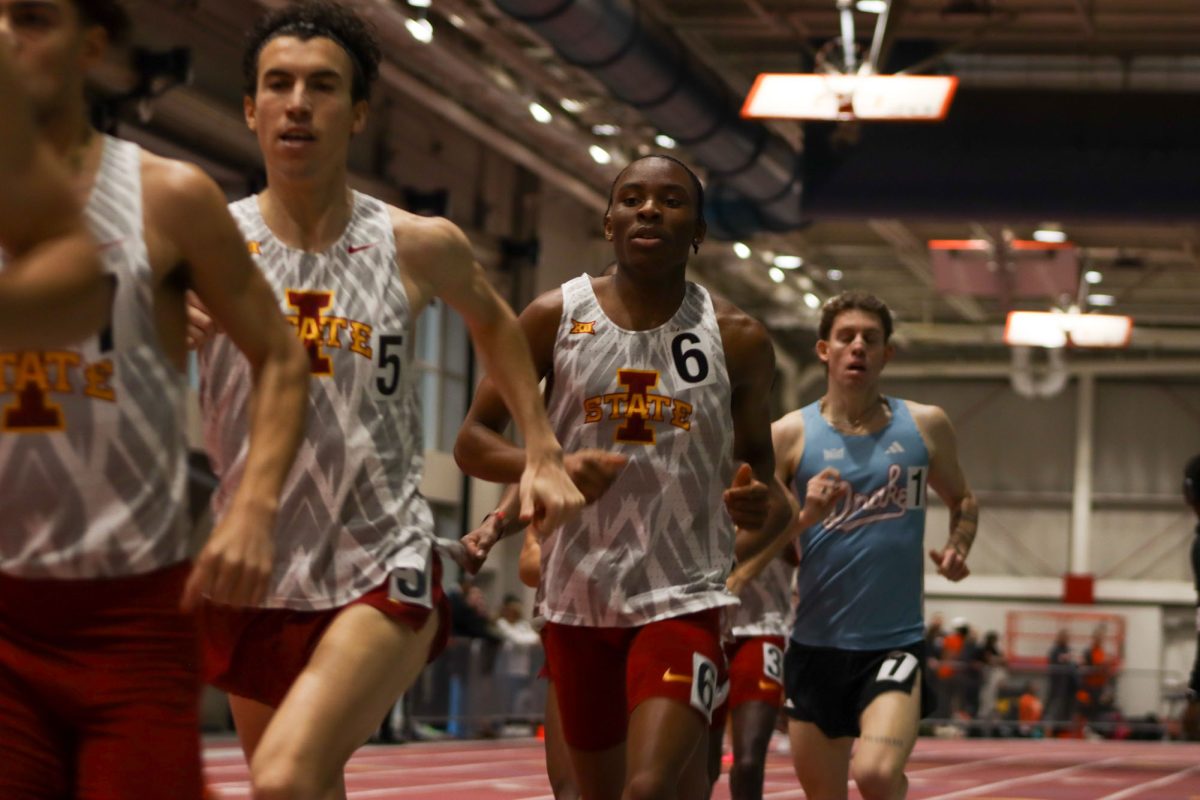Governor’s plan to reopen state economy will follow a phased strategy
Caitlin Yamada/ Iowa State Daily
Gov. Kim Reynolds delivering a speech at the 2020 Deterrence and Assurance Academic Alliance Workshop and Conference on March 11 in the Student Innovation Center.
April 22, 2020
By using a “responsible and phased-in manner” that follows the guidelines issued by President Donald Trump and the Centers for Disease Control and Prevention, Gov. Kim Reynolds is planning to open up Iowa’s economy again.
Businesses that are deemed “non-essential” must remain closed until April 30, with the lifting of restrictions resulting from the governor’s proclamation set to follow a reassessment of the public health situation, with the exception of schools, which Reynolds announced will remain closed for the remainder of the school year.
Chad Hart, associate professor of economics at Iowa State, said schools being closed will have a bigger impact on the economy than what might be suspected.
“[S]chool is not only for learning, but it’s also a place you knew your children would be taken care of while you were at work for the day,” Hart said. “If the labor force is open in full force, you have to have the schools open along with that.”
Reynolds has not provided specifics on what opening up Iowa’s economy would look like, though she did say in a press conference the “Opening Up America Again” plan the White House released April 14 would closely align with plans for reopening the state.
Hart said Iowans can expect to see a similar plan for restarting the economy.
“[Reynolds] started out with few restrictions on businesses and tightened them up over the course of weeks,” Hart said. “I think you’re going to see that same exit strategy. It’ll be selective and open up certain parts of the economy first. If you’re one of the last industries to shut down, you’ll probably be one of the first to open back up again.”
Reynolds deemed many of Iowa’s major industries essential, so much of reopening the economy would entail lifting restrictions on non-essential businesses.
“We maintained a lot of our agriculture, food and energy businesses,” Hart said. “They’ve been labeled essential along with health care. I think what you may see are things like financial, banking, legal things where folks have deadlines to meet. My guess is you’ll see those open up first.”
The White House’s plan is a rough outline of what to expect, but it involves keeping bars closed and opening up gyms while maintaining social distancing standards. The plan asks at-risk residents to continue to stay home, as well as limiting visitors in nursing homes and keeping schools closed.
In addition to opening up non-essential businesses, Hart said he thinks opening up travel will be an important aspect to boosting the economy.
“[T]he biggest impact we’ve seen thus far is, we’ve shut down businesses where there’s essentially no travel, and that has had severe repercussions across the economy,” Hart said. “So if you’re looking to gear things up, you’re looking at the way to start up transportation to get all the other parts of the economy run again.”
Seven Midwestern governors joined together to coordinate restarting their economies that faced restrictions due to the pandemic. The seven states include Illinois, Ohio, Michigan, Indiana, Minnesota, Wisconsin and Kentucky. Rather than work with those seven Midwestern states, Iowa has chosen to work closely with Nebraska, South Dakota, Kansas, Missouri and Arkansas.
Hart said Reynolds’ approach is specifically beneficial to Iowa.
“It’s not that the governor is going at it completely alone, but she’s feeling fairly confident that her approach is working well for Iowa,” Hart said. “She is working with other governors throughout the country, but she’s not quite at the point to [join] with other states.”







